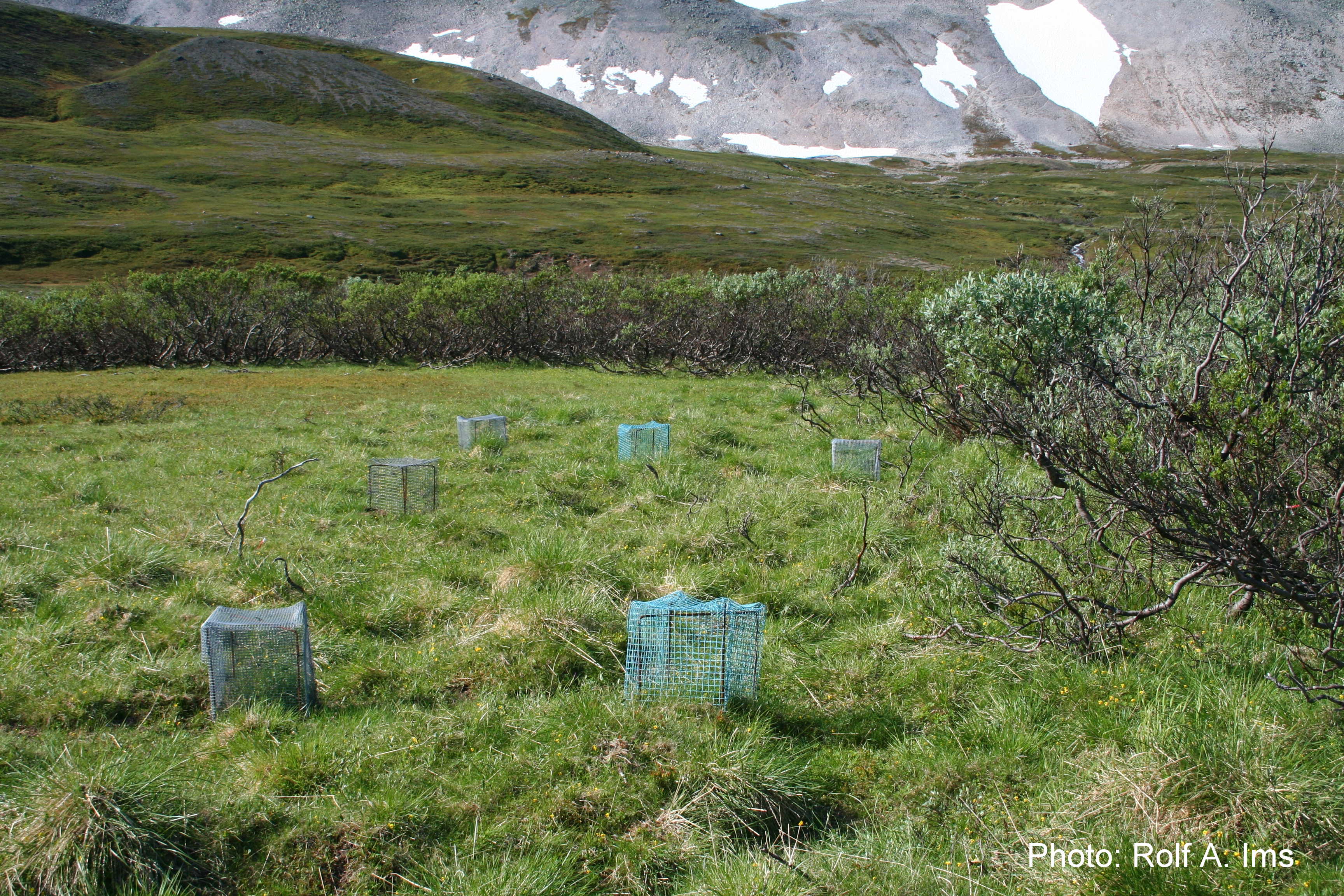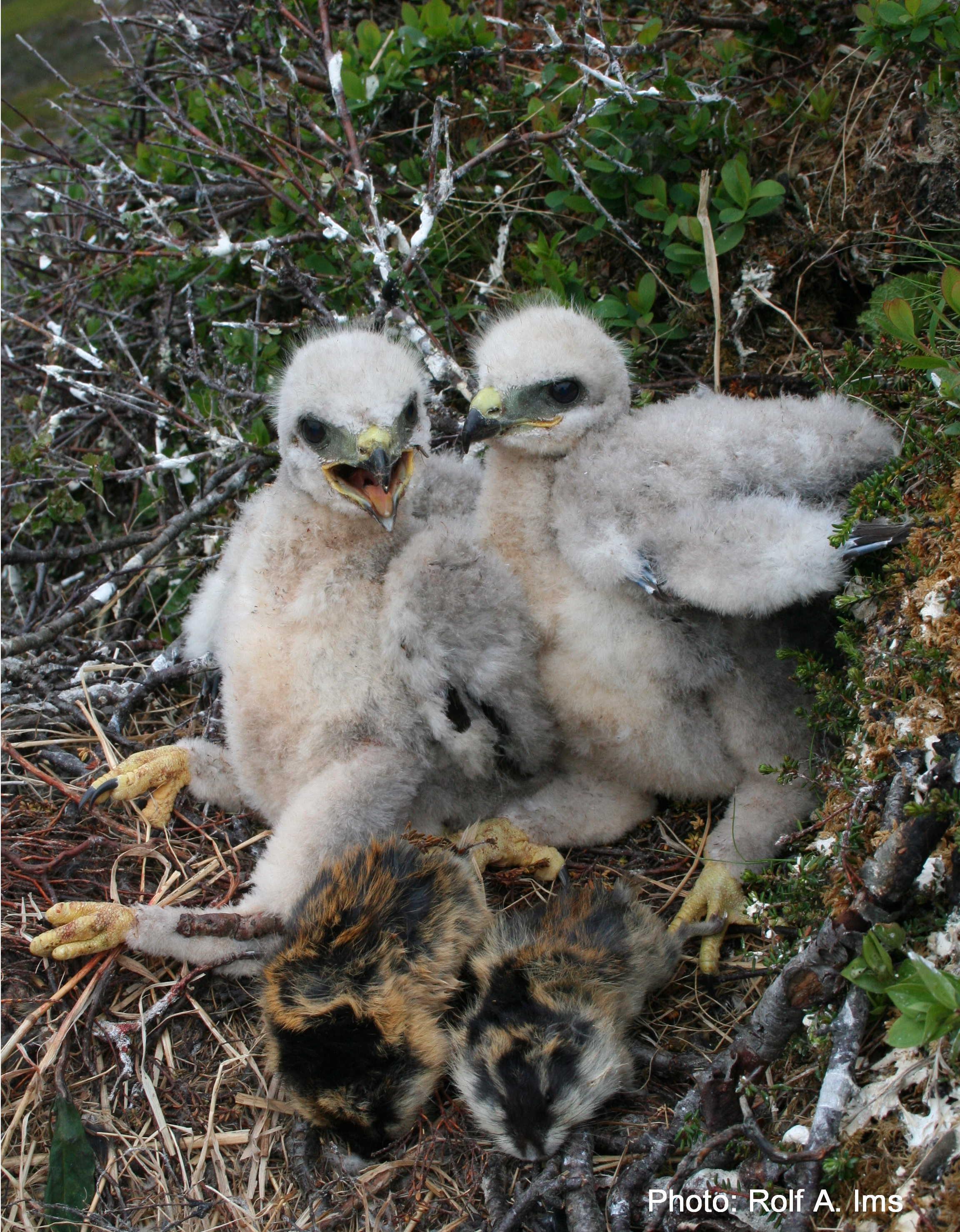Willow thickets as hotspots for for biodiversity and ecosystem interactions Willow shrubs can form dense, continuous thickets on riparian sediment plains in alpine and arctic tundra. Willow thickets have several ameliorating engineering effects on the environment. Willow thickets provide habitat for a lush understorey of other vascular plants and thereby food resources and structural cover for wide taxonomic diversity of herbivores and their predators. At the landscape level willow thickets, being spatially restricted to the mesic and fertile soils in riparian areas, constitute relatively small landscape elements embedded in a matrix of xeric, unproductive tundra heaths. In such a spatial setting willow thickets are likely to serve a hot spot function in terms of high biodiversity and as foci and sources of trophic interaction. |
|
Reindeer overabundance/browsing is likely to cause an increased fragmentation and a reduced area extent of such riparian willow thickets (Bråthen et al. 2007, Ims et al. 2007). Owing to their hot spot function this is likely to have significant cascading impacts on the tundra food webs. We have set out to quantify such impact by experimental and observational studies on the Varanger peninsula and Ifjordfjellet in eastern Finnmark. Essential to this project is to quantify impact of fragmentation and area reduction at all trophic levels in term of effect on interaction strengths . Browsing effects of willow and other vascular plants are studied by exclosure experiments and observation approaches. Small herbivores are studied by trapping methods and pellet group counts. Vertebrate carnivores are studied by several methods such as breeding territory surveys for skuas and rough-legged buzzards, tracking tubes for small mustelids and snow tracking for all mammalian predators. Moreover, diets of various groups are studies by pellet analysis, stomach analysis and by the use of stable isotopes of samples of feathers and biopsies. Insectivores and herbivores are studied by point transects methods. Plots for all measurements are allocated in willow thickets areas with different fragmentation and area extents (see design). We also quantify the potential spatial subsidizing effects of willow thicket hot spots on the surrounding landscape by conducting similar measurements in surrounding heath habitats. |
Exclosure experiments are conducted in several locations in Eastern Finnmark. At each site growth of 9 small willow plants is monitored, six plants being caged and three outside exclosures
Rough-legged buzzards chicks feeding on lemmings |

